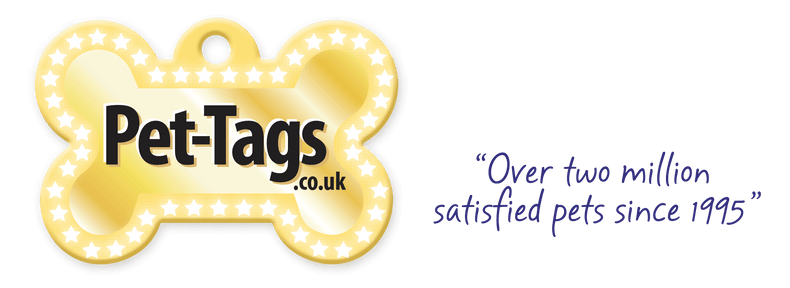
Understanding Your Dog's Body Language
Know What They're Really Saying
Our pets are important to us, but unfortunately, we don’t speak each other’s language. For this reason, it is important that as pet owners we learn to understand our dogs' body language and behaviour indicators. In addition, we must ensure that our pooches have up-to-date information on their dog tags, so lost pets can easily be returned - especially as they won’t be able to tell anyone where they live!
Ensuring that you understand your dog’s emotions will help you develop a positive relationship and will assist you in teaching your dog acceptable behaviour for living with you and your family.
Keep an eye out for the following behaviours so you can react accordingly!
Relaxed Posture, Tongue Out, Wagging Tail
These signs indicate a happy, relaxed dog – a very happy dog will have a very waggy tail, so much so that they may look like they are having a little dance! Dogs that are happy and relaxed are generally more willing to comply with training exercises, although it's still important to keep an eye out in case they get bored or tired. After all, the last thing you want is to push your dog too much.
Hackles Raised, Tail Bristled, Ears Up, Baring Teeth:
This is a dog's warning sign; he is showing his aggressive side to get the offending individual to back off. This stance may also be accompanied by growling or barking. It is very rare for a dog to go straight from a happy, relaxed stance to defensive attack mode unless severely threatened. Most dogs will show some kind of warning or threatening signs to give time for the offender to back off or stop the action that is annoying the dog.
You should pay extra close attention to children and other pets around dogs, even familiar family dogs, as the warning signs often get ignored by those who don’t know how to recognise and respond to them - this is when accidents can occur. These can easily be avoided by understanding the fact that dogs are still animals and most will not show the same tolerance as a human to being hugged or having ears or tails pulled.
Ears Up, Relaxed Face, Tongue Out, Crouched in a Bow Position:
This is the classic expression for 'let’s play' and will sometimes be accompanied by excited short barks or occasional bursts of running or jumping before returning to the 'bow position' with front legs lowered and tail thrust in the air. This is the perfect time to have some fun with your pup; throw a ball, go for a run or simply play chase - it’s a great opportunity to bond with your furry friend.
Tail Tucked Between Legs, Ears Back, Lowered Posture:
These are the signs of a nervous or fearful dog and should be watched out for, especially as a nervous or fearful dog can go into attack mode if considered threatened or cornered. If a dog’s body language changes from them trying to make themselves small to hackles raised, ears flat back and lips curling, it’s time to give the dog space.
When they are fearful or stressed, you may also notice their paw pads are hot or even sweating and the dog is avoiding all eye contact. A dog that rolls onto his back and whimpers is showing complete submission - this is indicated by their willingness to show their sensitive areas such as their stomach and throat to their opposition.
Every dog has their own nuances and personality traits, however, this guide is a general indication of body language to keep an eye out for. Next time you interact with your dog, why not make a mental or physical note of the types of signs he shows while training, playing or interacting with other dogs in the park.
If your dog has been showing good positive behaviour why not treat him or her to a new dog tag from our pet tags range?
